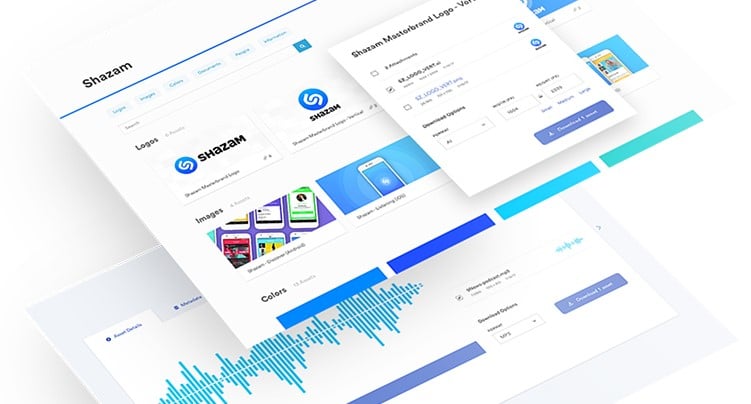
Ensure brand consistency and enforce correct asset usage with a DAM platform that incorporates powerful and unique digital rights automation.
In our last post, “How you can guarantee brand consistency while slashing costs”, we discussed the technological gap between brand assets housed in company DAMs and their release into the wild and the risk of losing control of brand consistency.
Why does that matter? Strong and consistent branding equals better financial performance. According to McKinsey & Company, B2B companies with strong brands outperform others by 20 per cent.
Conversely, bad brand perception can wreck your business. At the height of the “cola wars” in 1985, when Pepsi and Coca-Cola were engaged in a pitch battle for the number one spot in the market, Coca-Cola announced it was scrapping its original formula for a sweeter version. The new flavour had tested well with consumers, but the company underestimated the public’s love for the original brand, and “new Coke” tanked.
Coca-Cola obviously did okay in the end, but not all businesses are 100-year-old multinationals with billion-dollar sales. And not all branding screw-ups are that monumental. Something as basic as your logo being different across touchpoints, or inconsistent messaging, or slightly different colour shades can signal to a customer that your business, at best, has poor internal processes.
At worst, it flags you as a company that customers can’t trust.
In other words, you can have the greatest product on the planet, but if customers lose trust in you, you lose them.
Managing your brand assets in the wild
As more and more content is delivered online and marketing activities become increasingly digital in nature, managing how audio, video and photographic assets are distributed has become increasingly complex: movie studios spend millions on running pitch battles with content pirates, while large corporations employ armies of minions to police the use of their brands.
If you’re a business whose product is sold through online retailers all over Australia or the world, how do you know your products and logos are being used correctly? How can you be sure your partners are informed when you make changes to your branding? More importantly, how can you be sure that they actually update the assets even once they’ve been notified? In a 2016 survey of 247 companies, almost 90 per cent of respondents said it was important to present their brands consistently, yet less than half were able to do so.
Not only is making sure your assets are used correctly and in the correct places important for brand protection purposes, companies also need to be effectively managing digital rights. Digital rights management (DRM) refers to the processes and systems that companies use to restrict or enable the use of proprietary content.
If content is published in breach of the contracts it was produced under, then companies expose themselves to litigation and compliance issues and risk damaging relationships with the creators of that content. More than that, if you don’t understand the rights associated with a particular asset, you won’t be able to effectively leverage those assets or monitor their use in the wild.
The convergence of DAM and DRM
DAMs of days gone by have struggled to deliver effect DRM, but in recent years DRM and DAM have begun to converge. Brandfolder is one DAM platform that delivers powerful and effective DRM tools.
Brandfolder’s proactive DRM allows you to organise, distribute and manage your asset rights and permissioning with tools like asset availability, collection expiration, asset approvals, request access capabilities, and customisable permissions for collections.
And then, while you’re doing more important things like running your business, the system’s web crawler will scour websites, hunting for outdated or expired assets in the wild. No more enforcing proper brand usage, policing versions and manually checking expiration dates, usage rules and copyright on thousands of assets in potentially millions of locations.
Underpinning this functionality is Brandfolder’s “Smart CDN” which builds on existing CDN technology from Amazon Web Services. Among other things the Smart CDN propagates changes across the internet, allowing you to instantly update assets in multiple locations instead of contacting every distribution partner directly.
Smart CDN links also enable Brandfolder users to maintain assets bound by rights restrictions. Assets can expire per the terms of the rights, or can be replaced by new or updated assets within the same Brandfolder link.
Practical applications
A Brandfolder survey of brand content managers found that their number-one investment priority was “consolidated management of all content assets”, followed closely by “managing brand messaging across the company”.
Brandfolder CEO and chairman Luke Beatty says the Smart CDN is designed to tackle these “real-life pain points”.
“By harnessing the power of existing CDNs, we knew building functionality that allows for automatic updates to assets with integrated formatting capabilities would dramatically benefit all our clients," Mr Beatty says.
Brandfolder client, Spyderco, US-based makers of high-quality knives and sharpeners, use the Smart CDN functionality to power their entire website.
“I really loved the concept of only having to update an asset in one place and having that update pushed everywhere on our site,” says Sypderco digital media and marketing administrator Kristi Hunter.
Hunter worked with Brandfolder’s product team to use the existing API to create a dynamic sync between Spyderco’s DAM and their website.
“We launched in November, 2016 and the dynamic sync ensures that our site is always current. Hunter says. “We kept hearing, ‘Get your assets in one place,’ to ensure your assets are accurate, safe, and relevant. I couldn’t think of a better place than our website to do this.”
Conclusion
Achieving best-practice brand management is increasingly complicated. Not only are there an ever-increasing number of brand touchpoints, but contractual usage rights and permissions are evermore complex and difficult to negotiate in a globally connected world. Brandfolder’s dynamic DRM, powered by its Smart CDN, allows you to proactively establish rights within the DAM and then enforces these rules automatically in the wild, allowing you to remove or update old or expired assets in multiple locations instantly.




 Previous
Previous



